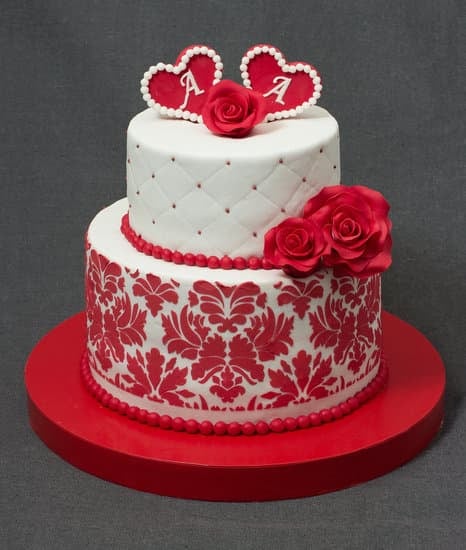Arranging tables at a wedding reception is a crucial aspect of event planning, as it sets the tone for the entire celebration and influences the guest experience. The way tables are organized can impact the flow of the event, guest interactions, and overall aesthetic. In this article, we will delve into how to arrange tables at a wedding reception to create a memorable and enjoyable experience for all.
When it comes to table arrangement, one of the key decisions to make is whether to opt for round or long tables. Each option has its own advantages and can contribute to the overall ambiance of the reception. Additionally, choosing between assigned seating and open seating can also play a significant role in ensuring that guests feel comfortable and well taken care of throughout the event.
Considerations such as family dynamics, friend groups, and guest preferences should also be taken into account when arranging tables. Understanding these factors can help create a seating layout that encourages positive interactions among guests and contributes to a harmonious atmosphere. By carefully planning table shapes, sizes, centerpieces, and decor, couples can enhance the visual appeal of their reception space while maintaining functionality and flow.
Choosing the Right Floor Plan
When it comes to planning a wedding reception, one of the key decisions to make is choosing the right floor plan for your tables. The layout of your tables will not only impact the overall aesthetic of the reception space but also play a significant role in how guests interact and socialize throughout the event. One of the main considerations when deciding between round and long tables is the size and shape of your venue.
Round tables are a classic choice for wedding receptions as they create an intimate and sociable atmosphere. Guests seated at round tables can easily converse with everyone at their table, making them ideal for smaller gatherings or venues with limited space.
On the other hand, long tables are perfect for maximizing seating capacity in larger venues while still maintaining a sense of elegance and sophistication. Long tables also provide a great opportunity to create a cohesive design by using long table runners or floral arrangements down the center.
Another important factor to consider when choosing between round and long tables is the overall aesthetic you want to achieve at your wedding reception. Round tables are traditionally associated with a more formal and romantic feel, while long tables can lend themselves to a more modern and chic look.
Ultimately, whether you opt for round or long tables, it’s essential to consider how the table arrangement will impact the flow of your event and ensure that guests are comfortable throughout the celebration.
Seating Assignments
When it comes to planning the seating arrangements for your wedding reception, one of the key decisions you’ll need to make is whether to have assigned seating or open seating. Each option has its own benefits and considerations, so it’s important to weigh them carefully before making a decision.
Assigned seating can be a great choice if you want to ensure that all of your guests are seated with people they know and get along with. It also allows you to strategically place guests in a way that will foster good conversation and create a cohesive atmosphere at each table. To effectively arrange tables at a wedding reception with assigned seating, consider creating a detailed seating chart that accounts for family dynamics, friend groups, and any potential conflicts.
On the other hand, open seating offers guests the freedom to choose where they sit, which can be more casual and relaxed. This option works well for smaller weddings or if you have a laid-back vibe in mind for your reception.
To organize tables effectively with open seating, provide clear signage or table numbers so guests can easily navigate the space and find an available seat. Additionally, consider creating designated areas for specific groups of guests, such as friends from college or coworkers, to help facilitate mingling and conversations.
- Consider including both assigned seats and open seats at different tables
- Use escort cards or an online RSVP system to communicate seating assignments
- Be prepared for last-minute changes or guest preferences on the day of the event
Ultimately, whether you choose assigned seating or open seating for your wedding reception, the most important thing is to create an atmosphere where your guests feel comfortable and included. By carefully considering the dynamics of your guest list and implementing thoughtful table arrangements, you can set the stage for a memorable and enjoyable celebration.
- Create a timeline for when you will finalize your seating arrangements
- Communicate your chosen seating arrangement format clearly on your wedding invitations
- Work with your venue coordinator or planner to ensure that tables are set up according to your specifications
Guest List Considerations
When it comes to planning the seating arrangement for a wedding reception, one of the most important considerations is the guest list. Couples must take into account various factors such as family dynamics and friend groups to ensure that everyone feels comfortable and enjoys the celebration. Understanding these dynamics can help create a harmonious atmosphere and avoid any potential conflicts on the big day.
Consider Family Relationships
Family relationships play a significant role in determining how tables should be arranged at a wedding reception. It’s essential to consider any strained relationships within the family and whether certain individuals should be seated together or kept apart.
In some cases, it may be best to seat family members at separate tables to prevent any tension or awkwardness. On the other hand, seating close family members together can help strengthen bonds and create a sense of unity during the event.
Grouping Friends Together
In addition to family dynamics, couples must also consider friend groups when arranging tables at a wedding reception. Close friends who share common interests or backgrounds should be seated together to ensure they have an enjoyable experience. Mixing different friend groups can lead to animated conversations and new connections being formed. By strategically grouping friends together, couples can create a lively and engaging atmosphere that will make the celebration memorable for everyone involved.
Balancing Relationships
Finding the right balance between family members and friends can be challenging but crucial when planning the seating arrangement for a wedding reception. Couples should strive to create a mix of tables that include both family members and friends while considering relationships and dynamics within each group. By carefully balancing these factors, couples can ensure that their guests feel comfortable, included, and have an unforgettable experience at their special day.
Table Shapes and Sizes
When it comes to arranging tables at a wedding reception, one of the key considerations is the shape and size of the tables. Different venues may have different spaces available, so it’s important to be creative in how you arrange the tables to make the most of the space.
One popular option is using round tables, which are great for creating an intimate and social atmosphere. Round tables allow guests to easily converse with everyone at the table and also provide a more elegant look.
Alternatively, long tables can create a more communal feel at a wedding reception. Long tables are ideal for seating larger groups of people together and can create a more rustic or bohemian vibe depending on the decor and setting. They are also great for maximizing space in smaller venues where round tables may not fit as well.
Considerations When Choosing Table Shapes and Sizes
When deciding on table shapes and sizes for your wedding reception, it’s important to consider practical aspects such as the number of guests attending, the size of the venue, and any specific themes or styles you want to incorporate into your event. Round tables are often preferred for their elegance and ease of conversation, while long banquet-style tables offer a communal dining experience perfect for larger groups.
Creative Seating Arrangements
To add an extra touch of creativity to your table arrangement, consider mixing different table shapes and sizes throughout the venue. For example, you could alternate between round and long tables or create clusters of smaller tables for a more intimate feel. Don’t be afraid to think outside the box when arranging your tables – after all, it’s your special day.
Centerpieces and Table Decor
When it comes to table decor and centerpieces at a wedding reception, there are endless possibilities to elevate the overall aesthetic of the event. One key consideration is choosing a theme or color scheme that ties everything together. Whether you opt for elegant floral arrangements, vintage candles, or modern geometric designs, make sure that the centerpieces complement the rest of the decor elements such as linens, chair covers, and lighting.
Another important aspect to consider is the height of your centerpieces. Taller centerpieces can create a sense of drama and sophistication, while shorter ones allow for easy conversation across the table. It’s essential to strike a balance between tall and short centerpieces throughout the room to ensure visual interest and cohesion. Additionally, incorporating elements like mirrors, candles, or twinkling lights can add depth and ambiance to each table setting.
When planning your table decor, don’t forget about other details such as table runners, place cards, napkin rings, and menus. These small touches can have a big impact on the overall look and feel of your reception space.
Remember to consider the layout of your tables when choosing these additional decor items – you want everything to flow seamlessly together. Ultimately, by paying attention to these details and incorporating personal touches that reflect your style as a couple, you can create a stunning atmosphere that will leave a lasting impression on your guests.
| Aspect | Tips |
|---|---|
| Theme and Color Scheme | Choose a cohesive theme or color palette for centerpieces that complements overall decor. |
| Height Variation | Mix tall and short centerpieces for visual interest but ensure they don’t obstruct views across the table. |
| Additional Details | Incorporate table runners, place cards, napkin rings, etc. that enhance the overall aesthetic while considering table layout. |
Table Layout Tips
Table layout plays a crucial role in the overall success of a wedding reception. Creating a flow and avoiding bottlenecks can ensure that guests have a comfortable and enjoyable dining experience. One key tip on how to arrange tables at a wedding reception is to consider the room layout and guest count. By strategically placing tables in relation to entrance and exit points, you can prevent congestion and make it easier for guests to navigate the space.
Another important aspect to consider when arranging tables at a wedding reception is the spacing between each table. It is essential to leave enough room for guests to move around comfortably without feeling cramped. Additionally, consider grouping tables together based on relationships or common interests to encourage conversation and create a more intimate setting.
One creative idea for table arrangement is to mix round and long tables throughout the reception space. This can add visual interest and variation to the layout while also accommodating different group sizes. By incorporating diverse table shapes and sizes, you can create a dynamic atmosphere that enhances the overall look and feel of the event.
| Table Layout Tips | Details |
|---|---|
| Room Layout Consideration | Strategically place tables near entrance/exit points |
| Spacing Between Tables | Leave ample room for guest movement |
| Mixing Table Shapes & Sizes | Incorporate round and long tables for visual interest |
Place Settings and Tableware
When it comes to setting the table for a formal wedding reception, attention to detail is key. Properly arranging tables and place settings can truly elevate the overall aesthetic of the event. Here are some tips on how to ensure your tableware and place settings are on point for your special day:
- Start by choosing the right tableware: Selecting the appropriate dinnerware, glassware, and flatware sets the tone for your table setting. Consider matching or coordinating pieces that complement your overall theme or color scheme.
- Create a cohesive look: When setting the table, aim for a cohesive and elegant look by ensuring that all elements work together harmoniously. Pay attention to details such as napkin folds, charger plates, and menu cards to create a polished finish.
- Pay attention to placement: Proper placement of tableware is essential for a formal setting. Ensure that each piece is correctly positioned according to traditional etiquette guidelines. For example, forks should be placed on the left side of the plate, while knives and spoons go on the right.
In addition to place settings, don’t forget about centerpieces and other decorative elements that can enhance the overall look of your tables. Consider incorporating fresh flowers, candles, or unique table runners to add a touch of elegance and sophistication.
Remember that flexibility is key when it comes to planning for unexpected changes on your big day. Be prepared to make adjustments if necessary but trust in your initial plan and vision for a beautifully arranged wedding reception. By following these tips on how to properly set the table for a formal reception, you can create a memorable dining experience for you and your guests.
Flexibility Is Key
When it comes to planning a wedding reception, one of the most important aspects to consider is how to arrange tables to ensure a seamless and enjoyable experience for all guests. From choosing the right floor plan to selecting the perfect centerpieces, every detail plays a crucial role in creating the desired ambiance.
However, despite careful planning, unexpected changes can still occur on the big day. That’s why flexibility is key in ensuring that any last-minute adjustments can be easily accommodated.
One of the primary considerations for staying flexible during a wedding reception is having a seating arrangement that allows for easy modifications. Whether you opt for assigned seating or open seating, it’s essential to have a system in place that can quickly adapt to changes in guest attendance or unforeseen circumstances. By having a well-thought-out plan and designated point person who can make swift decisions when needed, you can navigate any unexpected changes with ease.
Furthermore, maintaining open lines of communication with your vendors and staff members is crucial in handling any unforeseen developments during the reception. Being able to rely on your team to problem-solve and make quick adjustments as needed will help alleviate stress and ensure that any disruptions are seamlessly addressed.
Remember, weddings are live events, and being prepared for potential curveballs will ultimately contribute to a smoother and more enjoyable celebration for everyone involved. So, remember that while meticulous planning is essential in arranging tables at a wedding reception, remaining flexible and adaptable is equally important in successfully executing your vision on the big day.
Frequently Asked Questions
How Do You Set a Wedding Reception Table?
Setting a wedding reception table involves arranging items such as plates, glasses, cutlery, napkins, and table numbers in an organized and visually appealing manner. Centerpieces, place cards, and menus can also be added to enhance the overall look of the table.
Who Sits at Table 1 at a Wedding?
Table 1 at a wedding is typically reserved for the most important guests such as immediate family members of the couple, close relatives, or honored guests like the officiant or a mentor. This table is usually situated closest to the couple’s table or in a prominent location within the reception hall.
How Are Wedding Tables Arranged?
Wedding tables are often arranged based on factors such as relationships between guests, age groups, and personal preferences of the couple. Common seating arrangements include traditional head tables with the couple seated in the center or sweetheart tables where only the couple sits together.
Other options include round tables for better conversation flow or long banquet-style tables for a communal dining experience.

I have been involved in marriages for over 20 years helping couples and singles understand more about them.





